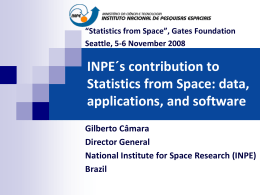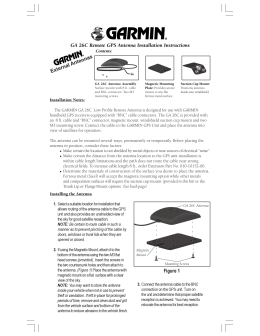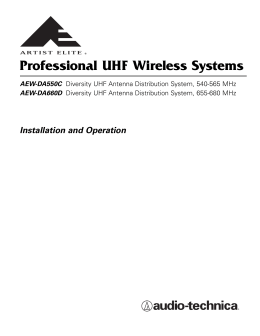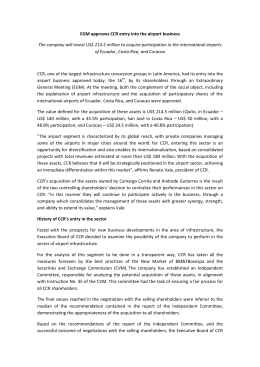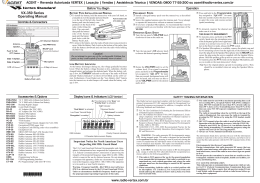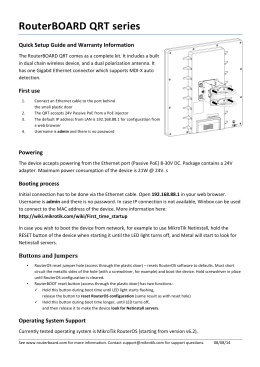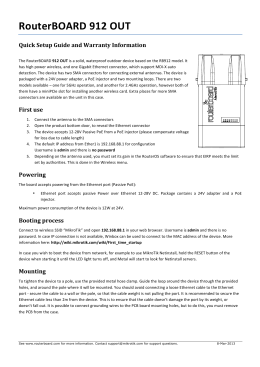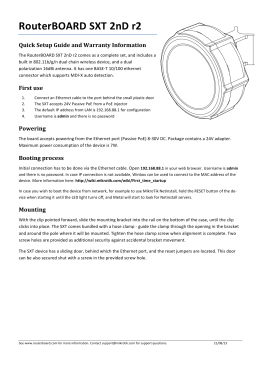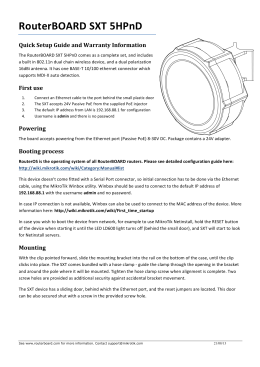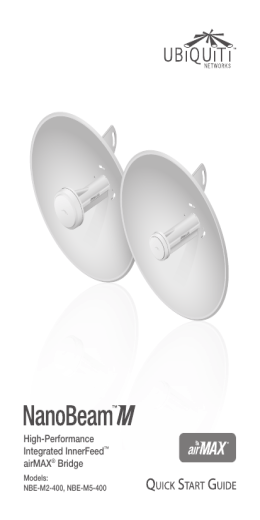NATIONAL INSTITUTE FOR SPACE RESEARCH – INPE/MCT SOUTHERN REGIONAL SPACE RESEARCH CENTER – CRS/CCR/INPE - MCT SOUTHERN SPACE OBSERVATORY – SSO/CRS/CCR/INPE - MCT FEDERAL UNIVERSITY OF SANTA MARIA – UFSM TECHNOLOGY CENTER – CT/UFSM SPACE SCIENCE LABORATORY OF SANTA MARIA – LACESM/CT/UFSM SH21A--01 POSTER SH21A ACTIVE ANTENNAS DESIGNS FOR LOW FREQUENCY RADIO ASTRONOMY Guilherme Simon da Rosa1, Nelson Jorge Schuch1, Natanael Rodrigues Gomes1, 2, Tardelli Ronan Coelho Stekel1, José Ricardo Bergmann3 1. Southern Regional Space Research Center – CRS/CCR/INPE - MCT MCT,, in collaboration with the LACESM/CT - UFSM UFSM,, Santa Maria, RS, Brazil Brazil.. 2. Electronic and Computing Department in collaboration with the LACESM/CTLACESM/CT-UFSM, Santa Maria, RS, Brazil. 3. Center for Telecommunications Studies of the Catholic University of Rio de Janeiro, Rio de Janeiro, RJ, Brazil. [email protected] CONCEPT ABSTRACT An interferometric array similar to the LOFAR Prototype Station – LOPES and to the Eight Eight-meter--wavelength Transient Array – ETA is being developed by using active antennas, more meter specifically thin inverted inverted--V dipole antenna, which is designed to cover the LOFAR frequency range under 100 MHz. MHz. This paper presents the design and evaluation of an active antenna for a prototype interferometric array which is being developed at the site of the Southern Space Observatory – SSO/CRS/CCR/INPESSO/CRS/CCR/INPE-MCT (29 29..4° S, 53 53..8° W, 480 m. a. s.), in São Martinho da Serra (see Figure 1), approximately 54 km distant far from the city of Santa Maria, in Rio Grande do Sul state, South of Brazil Brazil.. The next generation of large telescopes for radio astronomy at low frequency, below 100 MHz, will consist of thousands of wide wide--band dipole dipole--like antennas antennas.. At this frequency range, the sensitivity of a telescope is limited by the Galactic Noise, for this reason a thin inverted inverted--V dipole was combined with a simple active balun in order to provide the necessary sensitivity and a high useable bandwidth bandwidth.. The results show that an active antenna can present a satisfactory performance, although its VSWR varies greatly with frequency, and are consistent with our recent theoretical analysis, which are similar to LOPES and ETA radio telescopes conclusions.. Therefore, this instrumentation is adequate for multi conclusions multi--wavelength solar observations observations.. Figure 2: Basic concept for a low frequency radio astronomy active antenna of LOFAR. GALACTIC NOISE NOISE--LIMITED OPERATION The primary requirement of the active antenna system is that it delivers to the receiver a signal in which the dominant noise contribution is the unavoidable Galactic noise noise.. It means that the signal at the receiver input (S) must be greater than the instrumental noise of the antenna (contributions of preamplifier Np and the feedline Nf). SIMULATIONS NEC--2 NEC γ = S Np + N >1 f HFSS Figure 3: A thin invertedinverted-V dipole antenna. Figure 4: A LOFAR Low Band Antenna (LBA) like, proposed by [1]. Figure 1: 1: Main gate and buildings 1, 2, 3, 5 and 6 at São Martinho da Serra, RS, Brazil. Geographic Coordination Figure 5: An active antenna concept using two Mini--Circuits Mini MAR MAR--8 monolithic amplifier.. The feedline use a RF coaxial cable amplifier RG RG--58 (50 Ω). A RF transformer determines the impedance matching between the amplifiers output and the feedline feedline.. One of transformer coil terminals, on the side of a feedline,, is grounded and unbalanced feedline transmission line. line. Latitude: 29 29°° 26’ 24” S Longitude: 53 53°° 48’ 38” W Ellipsoidal Altitude: 480 m Figure 7: Simulations results using a NECNEC-2 and HFSS methods. The Galactic noise model proposed by [2] was employed along with the simulations antenna data. CONCLUSIONS We conclude that the active antenna designed can operate satisfactorily in the frequency range of 41 – 65 MHz. MHz. Geomagnetic Coordination Latitude: 19 19°° 13’ 48” S Longitude: 16 16°° 30’ E Inclination or “dip”: 33 33°° S Total Geomagnetic Field: 22,800 nT REFERENCES [1] W. A. van Cappellen, Cappellen, M. Ruiter and G. W. Kant, LOFARLOFAR-ASTRON ASTRON--ADD ADD--009 009,, ver ver.. 2.1, 2007. 2007. [2] H. V. Cane, Monthly Notice Royal Astronomical Society, vol. vol. 189 189,, pp. pp. 465 – 478, 478, 1979. 1979. Figure 6: The complete active antenna circuit. 2010 The Meeting of the Americas – American Geophysical Union Foz do Iguaçu, Paraná, Brazil Brazil,, 8–12 August, 2010 ACKNOWLEDGMENTS The authors acknowledge the Brazilian Program PIBIC/INPE - CNPq/MCT CNPq/MCT for fellowship, the Space Science Laboratory of Santa Maria – LACESM/CT/UFSM for financial support support.. Thanks to the American Geophysical Union for the opportunity to present this Project Project..
Download








